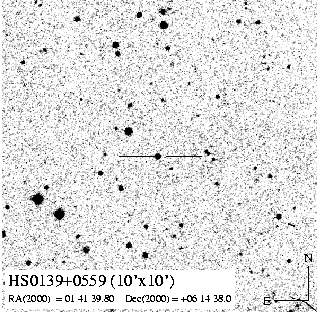There is a group of three objects of this kind, HS0139+0559, and HS0229+8016, and HS0642+5049. Finding out their true nature would be a nice project.

|
This is one of the systems where long-term monitoring is absolutely
crucial to determine the true CV subtype. We have obtained
spectroscopy and photometry on a number of occasions, and it looked
always like a UX UMa star, i.e. with a hot thick disc spectrum. The
best guess is that it is either a UX UMa novalike or a Z Cam dwarf
nova that we observed always during standstills. Almost no orbital
photometric variability, but a nice sinusoidal radial velocity curve
with a period of 243min. Monitoring is necessary to tell whether this is indeed a
novalike, which is always bright (and, possibly does show some deep low
states, as the VY Scl stars), or if it is a Z Cam dwarf nova which we
just happened to observe always in outburst or standstill.
There is a group of three objects of this kind, HS0139+0559, and HS0229+8016, and HS0642+5049. Finding out their true nature would be a nice project. |
 |